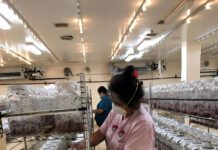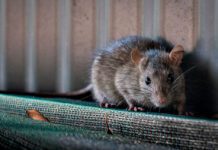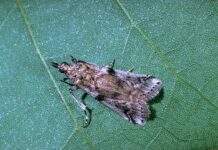
Dear Readers,
As the publisher of West Coast Nut, I want to take a moment to discuss an issue that’s increasingly on our radar: the growing threat of invasive pests. These uninvited guests are more than just a nuisance; they pose significant challenges to California’s tree nut industry. With the combination of record heat and ever-expanding global trade, it’s crucial to consider whether we truly have the tools and strategies needed to tackle this problem head-on.
The Rise of Invasive Pests
California has always been a hotbed for agricultural innovation, but it’s also become a prime target for invasive pests. Our state’s mild climate and bustling trade routes make it an attractive landing spot for pests from all over the world. Unfortunately, these pests often arrive without any natural predators, allowing them to spread quickly and cause extensive damage.
Here are a few pests we’re currently concerned about:
• Navel Orangeworm: This pest continues to wreak havoc on almond, pistachio and walnut by damaging the nuts and opening the door to harmful fungi.
• Brown Marmorated Stink Bug: Originating from Asia, this bug is now a serious problem for many growers as it feeds on a variety of crops.
• Spotted Lanternfly: Though not yet in California, this pest could become a significant threat based on the damage it has caused in other states.
• Polyphagous Shot Hole Borer: A tiny beetle that, along with its symbiotic fungi, threatens the health of nut trees.
Why Are These Pests Increasing?
The rise in invasive pests can be attributed to several factors:
• Global Trade and Travel: With more goods and people moving across borders, it’s easier than ever for pests to hitch a ride into California.
• Record Heat and Climate Change: This year, we’ve seen record-breaking heat, which creates ideal conditions for pests to thrive. Warmer temperatures speed up their life cycles, increasing their numbers and expanding their reach.
• Lack of Natural Predators: Without predators to keep them in check, these pests can multiply rapidly and cause widespread damage.
Are We Ready?
So, are we equipped to handle these pests? It’s a mixed bag. We’ve made strides in detection and management, but the landscape is constantly changing.
Here’s what we’re doing:
• Detection and Monitoring: California has a robust system of traps and surveillance programs designed to catch new infestations early. Public awareness campaigns also encourage everyone to report unusual sightings.
• Management Strategies: Integrated pest management is our go-to approach, combining biological, cultural and chemical methods to control pests sustainably. We also look at introducing natural predators and using targeted pesticides when necessary.
• Research and Innovation: Our research institutions are hard at work developing new solutions. From breeding pest-resistant tree varieties to using drones for precision agriculture, we’re exploring every avenue.
Moving Forward
The threat of invasive pests is a significant challenge, particularly with the added pressure of this year’s record heat. But by staying informed, collaborating across the industry and investing in research, I believe we can protect our crops and ensure the continued success of California’s tree nut industry.
Thank you for your ongoing support and dedication. Together, we can face these challenges and continue to thrive.















